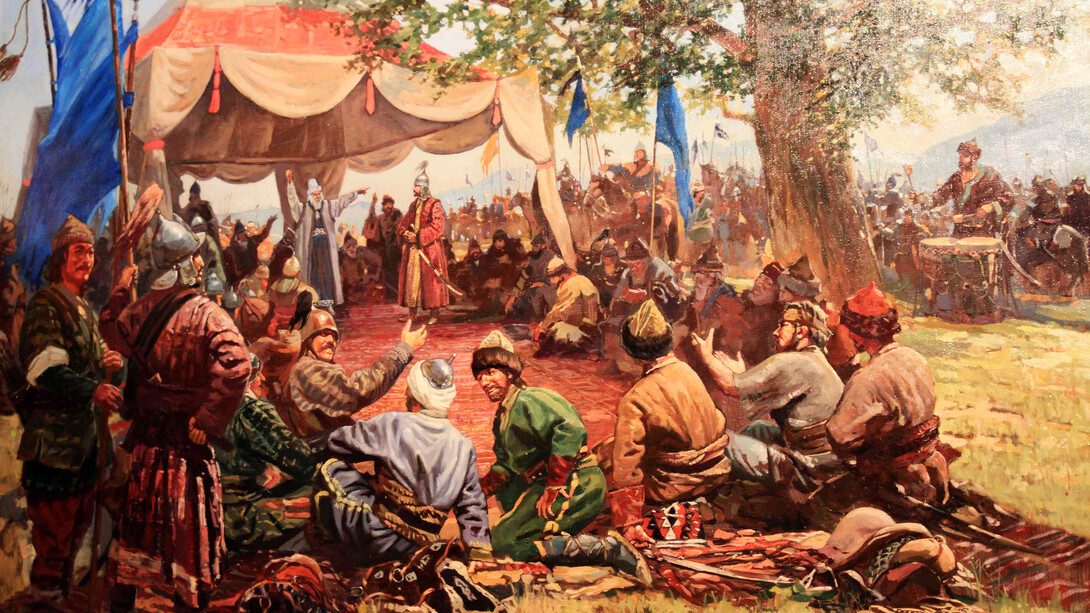Democratization movements in the Ottoman Empire, particularly in the late 19th and early 20th centuries, were driven by a combination of internal pressures, external influences, and the empire's gradual decline. These movements sought to introduce constitutionalism, representative government, and civil liberties, challenging the traditional autocratic rule of the sultans.

Key Phases of Democratization:
-
Tanzimat Reforms (1839-1876):
- Background: The Tanzimat period marked an era of significant reform aimed at modernizing the Ottoman state and centralizing authority. The empire faced internal revolts, military defeats, and growing European influence.
- Key Reforms:
- Gülhane Edict (1839): The Hatt-ı Şerif of Gülhane was a proclamation that promised to guarantee the life, honor, and property of all Ottoman subjects, regardless of religion. It introduced concepts like equality before the law and the establishment of a modern, centralized bureaucracy.
- Education and Legal Reforms: The Tanzimat reforms included the establishment of secular schools, legal reforms that introduced a more modern legal system (including the adoption of French civil codes), and the creation of provincial assemblies with limited powers.
-
First Constitutional Era (1876-1878):
- Constitution of 1876: This period saw the promulgation of the first Ottoman constitution, which established a parliamentary system with a bicameral legislature (the General Assembly) consisting of a Senate appointed by the Sultan and an elected Chamber of Deputies.
- Sultan Abdülhamid II: Although the constitution was a significant step towards democratization, Sultan Abdülhamid II suspended the parliament and constitution in 1878, citing the need for stability amid crises like the Russo-Turkish War (1877-1878). This marked the end of the First Constitutional Era.
-
Young Turk Revolution and Second Constitutional Era (1908-1918):
- Young Turks Movement: The Young Turks, a coalition of reformist groups, emerged as a powerful force advocating for the restoration of the 1876 Constitution and the re-establishment of parliamentary governance. They were influenced by European liberal ideas and the declining state of the empire.
- Revolution of 1908: The Young Turks, through a series of uprisings and military actions, forced Sultan Abdülhamid II to reinstate the 1876 Constitution and recall the parliament. This marked the beginning of the Second Constitutional Era, during which the Young Turks played a dominant role in politics.
- Political Reforms: The Second Constitutional Era saw the expansion of political parties, the press, and civil society. However, the Young Turks' rule was also marked by authoritarianism, especially during World War I, when they suppressed dissent and centralized power.
-
End of the Ottoman Empire and the Rise of the Turkish Republic:
- Post-WWI and the Fall of the Empire: The defeat of the Ottoman Empire in World War I and the subsequent occupation of Istanbul by Allied forces led to the final collapse of the empire. The Treaty of Sèvres (1920) dismembered the Ottoman territories.
- Turkish War of Independence (1919-1923): Led by Mustafa Kemal Atatürk, the nationalist movement in Anatolia rejected the Treaty of Sèvres and fought for the establishment of a new, sovereign state. The abolition of the sultanate in 1922 and the proclamation of the Republic of Turkey in 1923 marked the definitive end of the Ottoman Empire and the emergence of a secular, republican regime.
Significance:
The democratization movements in the Ottoman Empire, despite their limitations and setbacks, laid the groundwork for modern political developments in the Middle East. They introduced ideas of constitutionalism, nationalism, and secularism that would later influence the foundation of the Republic of Turkey and other post-Ottoman states. The struggle between authoritarianism and democratization during this period also reflects broader global trends of the time, as empires worldwide grappled with modernization and reform.


